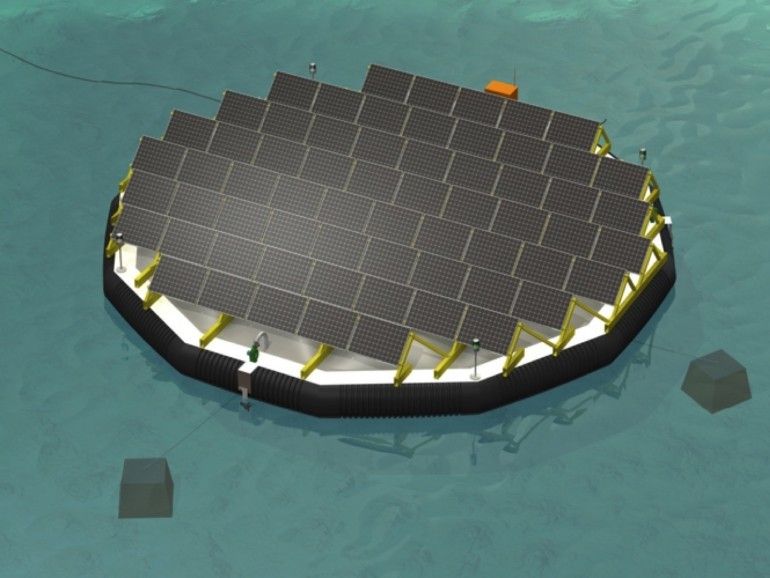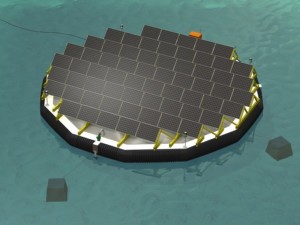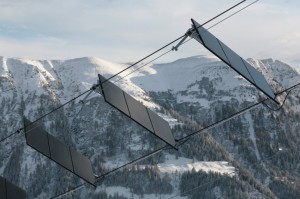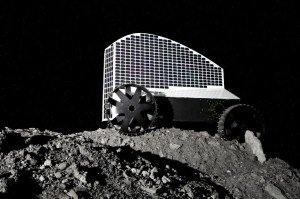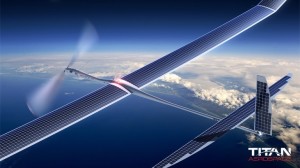Solar technology has evolved beyond just your grandpa’s big, bulky photovoltaic panels on the roof. Advances in flexible, hyper-efficient and nano-scale materials of late has made it possible for solar cells to begin popping up in all kinds of shapes and places you might not expect. Here’s a quick rundown of some surprising spots where solar technology dwells – be sure to flip through the gallery to get a full grasp on the scale of the increasingly solar-powered landscape.
Solar Energy at sea
Solar panels are great, so long has you can find the real estate on which to place them. One Swiss company is taking a novel approach to this limitation by creating floating islands of solar panels on Lake Neuchâtel. Each of the three planned 25-m (82-ft) diameter islands will be home to 100 photovoltaic panels for the next 25 years, for research and development purposes.
Meanwhile, with costs of fuel always seeming to be on the rise, shipping companies and other seafaring concerns are increasingly looking for ways of harnessing the power of that intense sun constantly beating down on vessels. We first saw one of the most impressive uses of “solar sails” in Shanghai in 2010, and since then others have looked at ways of equipping ships with panels in rigid sails. Given emerging flexible cell technologies, the day might also not be that far off when all of a ship’s surfaces, even sails, are covered in solar cells. In that spirit we find the TURANOR PlanetSolar yacht, which completed a voyage around the world last year using the power of the sun.
Solar Energy in the sky
In case you missed it, 2013 was a record-setting year for solar-powered flight, led by the Solar Impulse team completing the longest sun-fueled flight on its journey across America this summer.
Solar Impulse on an early test flight
Of course, flying on sun power could be a lot more practical if you don’t have to haul around the weight of bulky human beings in the process. Naturally, companies like Silent Falcon UAS Technologies have thought to slap solar cells onto significantly smaller and lighter drones that can be launched by hand and stay aloft for up to 14 hours.
Finally, while it’s not that high in the sky, a first-of-its-kind solar-powered ski lift is a sort of poetic way to cruise over some fine Swiss powder with the help of the resource that’s ultimately the number one enemy of snow everywhere.
Panels adorn a unique ski lift powered by the sun
Solar Energy in space
When you think about it, it makes sense: why not try to gather the sun’s rays on its home turf?
Researchers at Carnegie Mellon University have built a prototype of an ice and water-prospecting rover that the team hopes will eventually be sent to the moon on a SpaceX rocket. The vehicle, dubbed Polaris, is solar-powered, which can be tricky for exploring the higher lunar latitudes. Therefore, the rover will take advantage of special software that will help it make sure it has enough juice for its more shadowy explorations.
The Polaris lunar prospector prototype
A little closer to home, you’ve probably heard about problems with too much space junk in orbit. Wouldn’t it be nice if we could actually recover those satellites after a few years of service, maybe give them an upgrade and then send them back up?
That’s the basic concept behind the Solara, a solar-powered “atmospheric satellite” from Titan Aerospace. The Solara is basically a drone that can fly in the higher reaches of the sky for up to five years before returning to the ground in one piece. While it might not be able to route cell phone calls just yet, it can certainly keep tabs on anything else an upper atmospheric satellite can, and without the untimely end that meets most other orbiting craft.
Solara can stay airborne for five years
Last and most ambitious is a Japanese firm’s hope to build an array of solar cells around the Moon’s equator and then beam the power back to Earth. Not expected to be completed anytime soon, the “Luna Ring” would take 30 years to build using mainly robots and materials in the lunar soil. Shimizu Corporation hopes to initiate the project, which would generate up to 13,000 terrawatts of constant power, as soon as 2035.
Definitely not your grandpa’s solar power; more like your grandchild’s.
courtesy: GizMag
